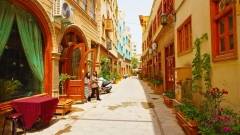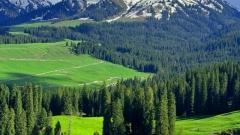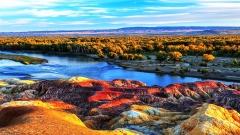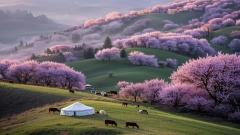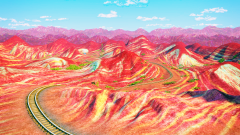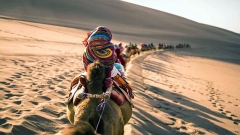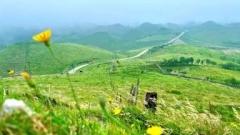Xinjiang, at the heart of the Silk Road, is a land of breathtaking landscapes and a crossroads of civilizations. From India and Central Asia, Buddhism spread here, taking root in oasis towns and desert settlements.
Today, ancient caves, temples, stupas, and statues still stand, telling stories of faith and cultural exchange. Visiting these sites feels like stepping back in time and hearing the whispers of history.
The Silk Road and the Spread of Buddhism
Around the beginning of the Common Era, the opening of the Silk Road allowed Buddhism to spread from India to the Western Regions, and eventually to China. Xinjiang played an irreplaceable role as a bridge in this process. Its oasis cities became important centers of Buddhist culture, building numerous temples and caves while nurturing a fusion of art and faith.
Most of these sites are located in Turpan, Kuqa, and Kizilsu, serving both as sacred religious spaces and as enduring evidence of East-West cultural exchange.
Key Buddhist Sites in Xinjiang
-
Kizil Thousand Buddha Caves (Kuqa)
Known as “China’s earliest Buddhist cave complex,” Kizil Thousand Buddha Caves were built in the 3rd century CE, earlier than the Mogao Caves of Dunhuang. Situated on cliffs along the Muzat River Gorge, the site includes over 200 caves preserving vivid murals.
The murals depict Buddhist scriptures, Jataka tales, and scenes of daily life, featuring bright colors and flowing lines with strong influences from Indian Gandhara and Central Asian art. Figures such as flying celestial beings and musical performers provide invaluable insights into Buddhist art.
- Visiting Tips:
Morning or late afternoon offers the best lighting for viewing murals.
Hiring a guide is recommended to fully understand the stories behind the artwork.

Kizil Thousand Buddha Caves
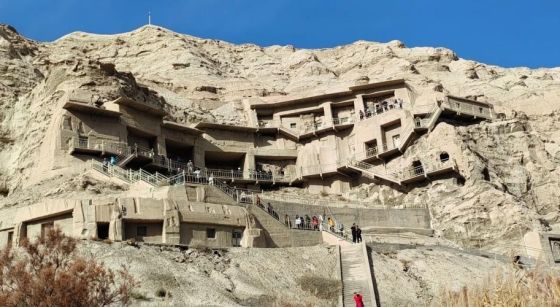
-
Bezeklik Thousand Buddha Caves (Turpan)
Located at the northern foot of the Flaming Mountains, Bezeklik Thousand Buddha Caves were established during the Northern Wei period and became a Buddhist center under the Gaochang Uighur Kingdom. The caves were once a thriving Buddhist hub along the Silk Road, with murals blending Central Chinese, Indian, and Persian artistic elements.
Despite some damage over time, the murals still convey the solemnity and grandeur of the site. Many statues depict serene expressions and flowing robes, highlighting the distinctive charm of Gaochang Buddhist art.
- Visiting Tips:
Summer temperatures can be extremely high; autumn or winter is recommended.
Combine with other Turpan attractions like Grape Valley and Jiaohe Ancient City for a cultural and natural itinerary.
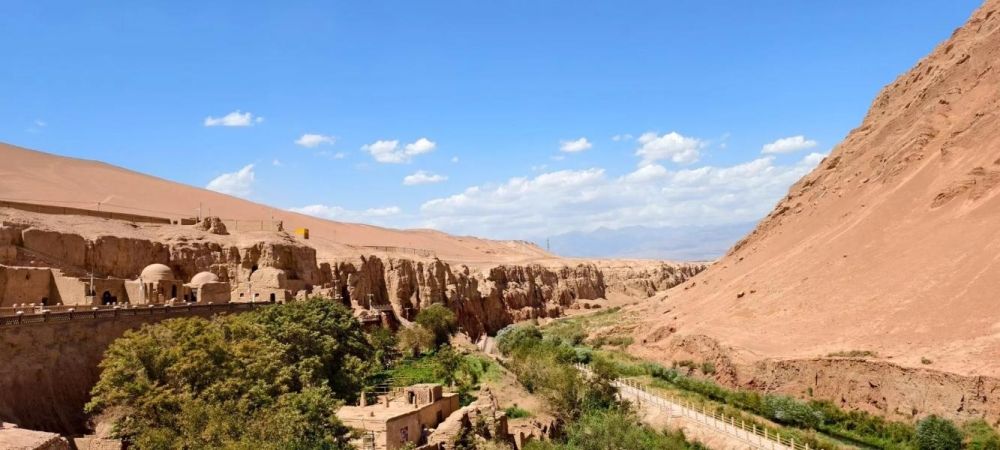
Bezeklik Thousand Buddha Caves
-
Kucha Cave Complexes (Kuqa, Baicheng, etc.)
Kucha was one of the most important Buddhist centers in the Western Regions, known as the “Buddhist capital of the West.” The numerous caves, including Kizil Ga Ha and Kumtula Caves, showcase a striking fusion of Eastern and Western styles. Figures are elongated with vibrant colors, reflecting strong Indian and Central Asian influences. These artistic styles later influenced Buddhist art in China.
- Visiting Tips:
The sites are dispersed, ideal for in-depth exploration.
The surrounding Gobi and canyon landscapes provide excellent hiking and photography opportunities.
-
Jiaohe Ancient City and Temple Ruins (Turpan)
Jiaohe is the world’s largest and best-preserved earthen city. After the 4th century, Buddhism spread widely here, with multiple temples and stupas constructed. Although the temples no longer stand, the remnants allow visitors to imagine the sound of bells and chanting that once filled the city.
- Visiting Tips:
Sunset from the city top offers breathtaking views.
Pair with Bezeklik Caves for a comprehensive exploration of Turpan’s Buddhist heritage.
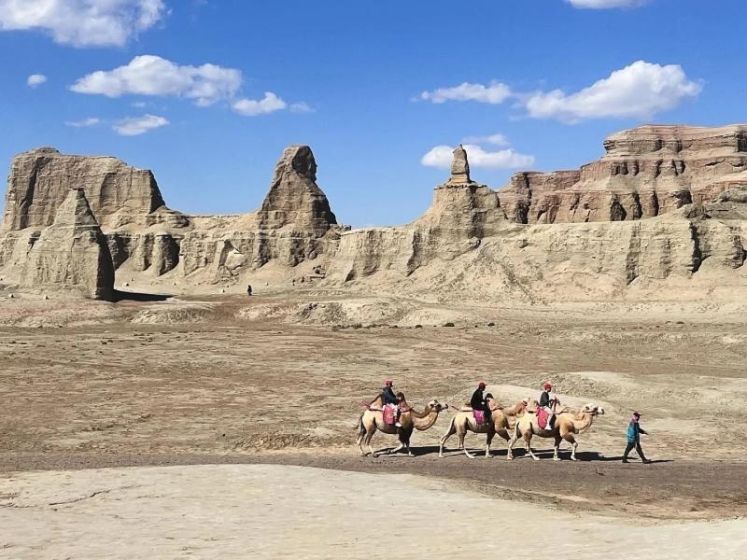
Jiaohe Ancient City
Recommended tourist routes
10-Day Silk Road Tour: Dunhuang, Mogao Caves, Urumqi & More
13-Day Silk Road Tour: Dunhuang, Mogao Caves, Urumqi, Kashgar, Taxkorgan & More
Artistic Value of Xinjiang’s Buddhist Sites
Xinjiang’s Buddhist sites are more than religious symbols—they are treasure troves of art. Combining Indian Buddhist styles, Central Asian motifs, and Chinese aesthetics, they form a unique “Western Regions Buddhist Art.” Murals and sculptures here provide irreplaceable material for studying cultural exchange and Silk Road history.
Examples:
- Flying deities and musical performers in Kizil murals illustrate East-West musical exchange.
- Costumes in Bezeklik murals combine Chinese silk robes with Persian patterns.
- Kucha cave murals are believed to have influenced Dunhuang art directly.
Travel Tips
- Best Season: Spring and autumn for pleasant weather and comfortable exploration.
- Transportation: Turpan and Kuqa have airports and high-speed rail, convenient starting points for visiting Buddhist sites.
- Notes: Photography inside caves is prohibited; some sites require advance booking or tickets.
- Cultural Respect: These are sacred sites—maintain silence and dress appropriately.
Xinjiang’s Buddhist sites allow travelers to traverse a millennium, experiencing the rich intersection of Silk Road civilization and religious art. For those seeking an immersive exploration of these ancient caves and temples, China Dragon Travel offers customized itineraries, making it easy to experience Xinjiang’s unique Buddhist culture. Contact us today to start your Silk Road Buddhist journey!



